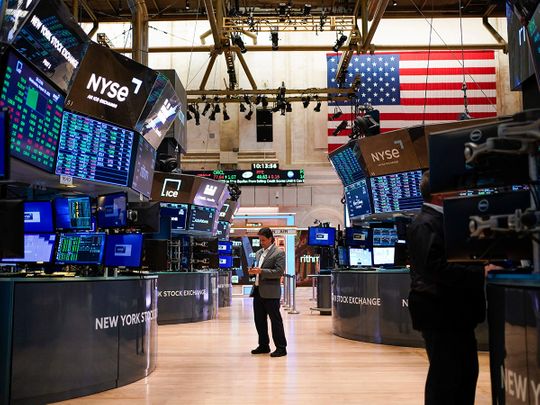
Financial markets entered an area of turbulence last week, which started when the Fed’s committee concluded.
As expected, the FOMC delivered a ‘hawkish skip’ - they didn’t raise interest rates, but their future projections still include one more hike for 2023, and now only two cuts for 2024, which compares to four cuts implied by futures at this time.
Meanwhile, they upgraded their economic outlook with faster growth and lower unemployment, but not their inflation forecast, unchanged at a reasonable 2.5 per cent core PCE for end 2024. This looks like a perfect soft landing, but there is a problem.
What markets love about soft landings is the perspective of lower interest rates, not higher for longer, as the Fed’s projections suggest. Markets responded: US Treasury yields jumped to their highest level since 2007, at 4.5 per cent for the 10-year. Higher interest rates mean lower present value of future cash-flows: all risk-assets, especially equities, are also under pressure in another painful sequence of positive correlation.
US bonds become more attractive, which supports the dollar, tightening global financial conditions.
‘Don’t fight the Fed’ is a mantra not to be ignored. Still, markets’ reaction looks severe, as, honestly, the surprises from the FOMC were more in the details than in the principle. After all, they didn’t hike, and no one was expecting them to declare mission accomplished on inflation.
Do markets have broader concerns?
We think they do. The FOMC may have been a catalyst rather than the only reason for a volatility episode fueled by several intertwined sources of uncertainty.
I just came back from a US ground trip, with basically three key takeaways, which are not necessarily negative, but clearly on the uncomfortable side.
First, inflation is real, and apart from the top quartile earners, on which consumption growth relies, people are suffering. Higher oil prices are adding pressure, and they are out of the reach of the Fed. Inflation is not an easy fix: the labor market is so tight that it’s difficult to picture how we could have growth without inflation, as the auto workers’ strike illustrates. Spanning across 20 states, they clearly say that a 20 per cent increase is not enough, and they have wide popular support – including from President Biden.
Politics of gridlock
This leads to the second point. Tensions in Washington are running high, between and even within parties, one year before the presidential election. Extreme polarization lowers the probability of a funding bill passing the House in time to avoid a government shutdown from this Sunday.
This may have a limited economic impact, but it’s another source of anxiety for markets, especially as Moody’s is considering reviewing their US credit rating – currently still AAA. This adds to concerns on Treasuries, along with supply and demand changing patterns. In case of a government shutdown, statistics on inflation or employment may even not be released, adding to uncertainty.
Third point: the consensus for a soft landing, combining moderating inflation with a slowing but resilient economy, is extremely strong among market strategists. Therefore, investors’ positioning is not as conservative as it was before the summer. This may be right, but this creates vulnerability.
This combination of factors sheds some light on the apparent contradiction of the September FOMC. The Fed is in the middle of a complicated puzzle. There are reasons to be hawkish: inflation is not at 2 per cent, and with a tight labor market and high oil prices, stronger growth could push it higher, through wages.
Do not discount recession
But there are reasons to be cautious: recession risk is not immaterial, at all.
To some extent, the economic impact of monetary tightening has been counter-balanced by fiscal largesse. This should come to an end: the current US budget deficit is around $1.5 trillion despite growth and full employment, and the cost of debt is rising.
It is a knife-edge for the Fed, especially as the state of the economy matters for the upcoming 2024 elections. Powell said that a soft-landing was not the base-case, despite the Fed’s projections anticipating it. There may simply be no base case.
There are also no obvious investment implications, as risks do not always materialize, and as markets can quickly change their views. We lean towards the conservative side, with an overweight in cash and a bias towards quality.
But we are not outright bearish, and close to our strategic allocation. We expect volatility, with probably more opportunities down the road. The year of unpredictability is certainly not over.









